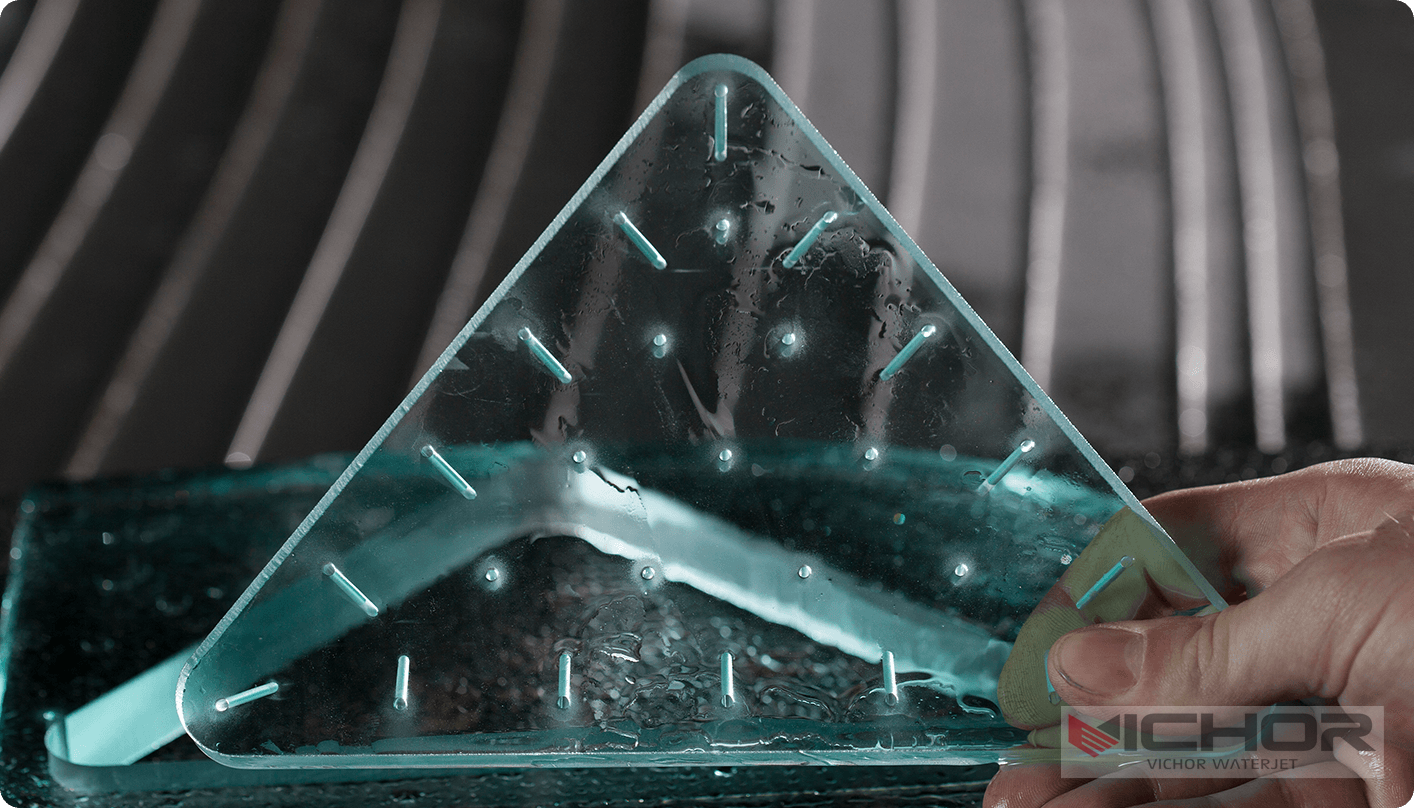
Water Laser Cutting Machine: How It Works, Benefits, and Common Questions
In the world of precision manufacturing and industrial cutting, few technologies merge innovation and efficiency as seamlessly as the water laser cutting machine. This advanced tool combines the precision of laser cutting with the versatility of waterjet technology, offering a unique solution for a wide range of materials and applications. Whether you’re in aerospace, automotive, or custom fabrication, understanding how a water laser cutting machine operates, its benefits, and its potential challenges can help you determine if it’s the right investment for your business. In this article, we’ll explore this technology in depth, introduce you to the brand VICHOR, and address common questions users often have.
What Is a Water Laser Cutting Machine?
A water laser cutting machine is a hybrid cutting system that integrates a high-powered laser with a waterjet guidance system. Unlike traditional pure laser cutters or pure waterjet cutters, this machine uses a laser beam to heat and soften the material while a high-pressure waterjet simultaneously cools and removes the molten material. This combination allows for extremely precise cuts with minimal thermal distortion, even on heat-sensitive materials.
The term “water laser” can be somewhat misleading—it doesn’t mean that water is used to generate the laser. Instead, it refers to the synergistic use of water and laser energy in a single cutting head. This technology is particularly useful for materials that are difficult to cut with conventional methods, such as composites, reflective metals, and brittle ceramics.
Companies like VICHOR have advanced this technology by developing systems that offer enhanced control, efficiency, and reliability. Their machines are designed to optimize the marriage of laser precision and waterjet versatility.
How Does a Water Laser Cutting Machine Work?
The operation of a water laser cutting machine can be broken down into a few key steps:
Laser Generation: A high-intensity laser beam is generated from a source (usually a fiber or CO2 laser) and directed towards the material surface.
Material Heating: The laser beam heats a very small point on the material to its melting or vaporization point.
Waterjet Assistance: Simultaneously, a ultra-high-pressure waterjet—often mixed with abrasive particles for harder materials—is directed coaxially with the laser beam. This jet helps in ejecting the molten material and cooling the surrounding area.
Motion Control: The cutting head moves along programmed paths based on CAD/CAM designs, ensuring high accuracy and repeatability.
This process significantly reduces the heat-affected zone (HAZ), which is a common issue with traditional laser cutting. The waterjet acts as a cooling and cleaning agent, making the water laser cutting machine ideal for applications where thermal stress must be minimized.
Advantages of Using a Water Laser Cutting Machine
Why are more industries turning to this technology? Here are some of the standout benefits:
Superior Precision and Quality: The combination of laser and waterjet allows for extremely fine cuts with tight tolerances, often as narrow as 0.1mm. This is critical in industries like medical device manufacturing and electronics.
Minimal Thermal Damage: The waterjet component cools the material during cutting, reducing the risk of warping, melting, or structural changes. This makes the water laser cutting machine perfect for cutting plastics, composites, and non-ferrous metals.
Versatility in Materials: This machine can cut almost any material—metals, alloys, glass, stone, ceramics, and even delicate fabrics. It’s especially useful for materials that are reflective or sensitive to high heat.
Environmental and Safety Benefits: Since the waterjet suppresses dust and fumes, the working environment is cleaner and safer. Additionally, water-assisted cutting reduces the need for secondary cleaning or finishing processes.
Cost-Efficiency for Specific Applications: While the initial investment might be higher than standalone systems, the reduced need for post-processing and the ability to cut diverse materials can lead to long-term savings.
Brands like VICHOR have further enhanced these advantages with features such as energy-efficient lasers, advanced software integration, and low-maintenance designs.
Applications of Water Laser Cutting Technology
The water laser cutting machine is used across various sectors due to its adaptability and precision. Some common applications include:
Aerospace: Cutting lightweight composites and titanium components without inducing thermal stress.
Automotive: Fabricating intricate parts from aluminum, carbon fiber, and other advanced materials.
Electronics: Precision-cutting circuit boards and semiconductor components.
Medical Manufacturing: Producing surgical instruments, implants, and devices with high accuracy.
Art and Design: Creating detailed sculptures, architectural elements, and custom signage.
VICHOR’s machines, for example, are employed by many of these industries for their reliability and ability to handle both prototyping and high-volume production.
Common Questions About Water Laser Cutting Machines
As with any advanced technology, users often have questions before investing in a water laser cutting machine. Here are some frequently asked questions:
1. How accurate is a water laser cutting machine?
These machines are highly accurate, capable of achieving tolerances within ±0.05 mm. The precision depends on factors like the laser power, water pressure, and control system. VICHOR machines, for instance, use high-precision motion controllers to ensure consistency.
2. What materials can it cut?
Almost any material—including metals, plastics, ceramics, glass, and composites. Reflective materials like copper and brass, which are challenging for traditional lasers, can be cut efficiently with a water laser system.
3. Is the water recycled in the system?
Most modern systems, including those from VICHOR, come with water recycling and filtration systems. This reduces water consumption and operational costs.
4. How does maintenance work?
Maintenance typically involves regular checks of the laser source, water pump, nozzles, and abrasive delivery system. While maintenance requirements are generally lower than for pure waterjet systems, it’s important to follow the manufacturer’s guidelines.
5. What is the typical operating cost?
Operating costs include electricity, water, abrasives (if used), and occasional replacement of parts like nozzles and lenses. While operational expenses can be higher than for some traditional cutters, the reduced need for secondary finishing can balance the overall cost.
6. Can it be used for thick materials?
Yes, but with limitations. While waterjet-assisted laser cutting improves thick-material cutting compared to standard lasers, extremely thick materials may still require pure waterjet or other methods. Most water laser cutting machines handle thicknesses up to 50 mm effectively, depending on the material.
7. How does VICHOR stand out in this market?
VICHOR focuses on innovation, reliability, and user-friendly designs. Their machines often include features like automated calibration, intuitive software, and robust customer support, making them a preferred choice for many businesses.
Is a Water Laser Cutting Machine Right for You?
Investing in a water laser cutting machine is a significant decision. It offers unparalleled versatility and precision, especially for businesses working with diverse or delicate materials. The technology minimizes thermal distortion, reduces waste, and often streamlines production workflows.
When considering a purchase, evaluate factors such as:
The types of materials you regularly cut
Your required precision and production speed
Budget for initial investment and operation
Availability of technical support and training
Brands like VICHOR offer demonstrations and consultations to help potential users understand the fit for their specific needs.
The water laser cutting machine represents a fascinating convergence of technologies, pushing the boundaries of what’s possible in modern manufacturing. Whether you’re looking to improve product quality, expand your material capabilities, or increase efficiency, this technology offers a compelling solution. With ongoing advancements from companies like VICHOR, the future of water laser cutting looks brighter than ever.
continue reading


